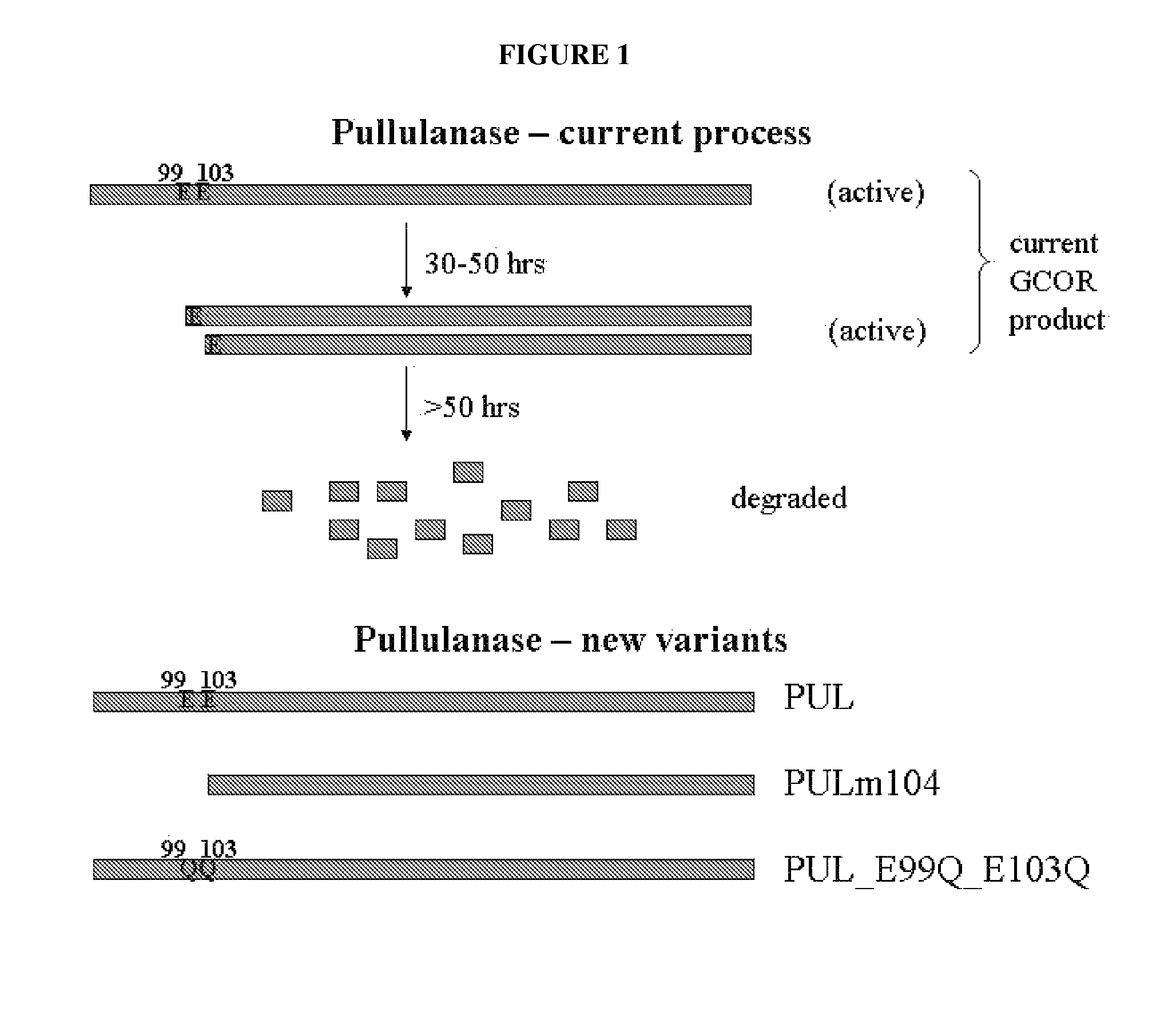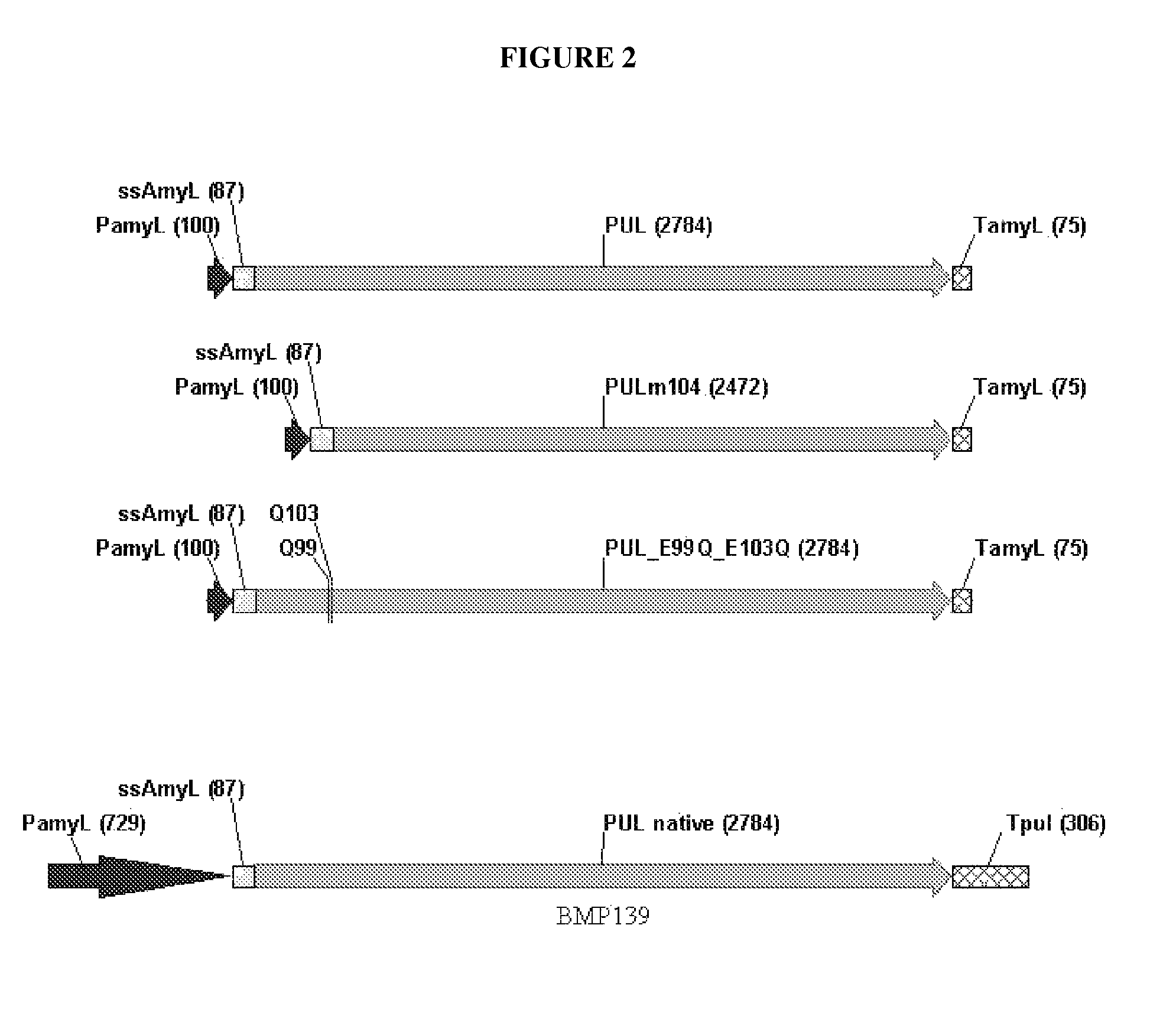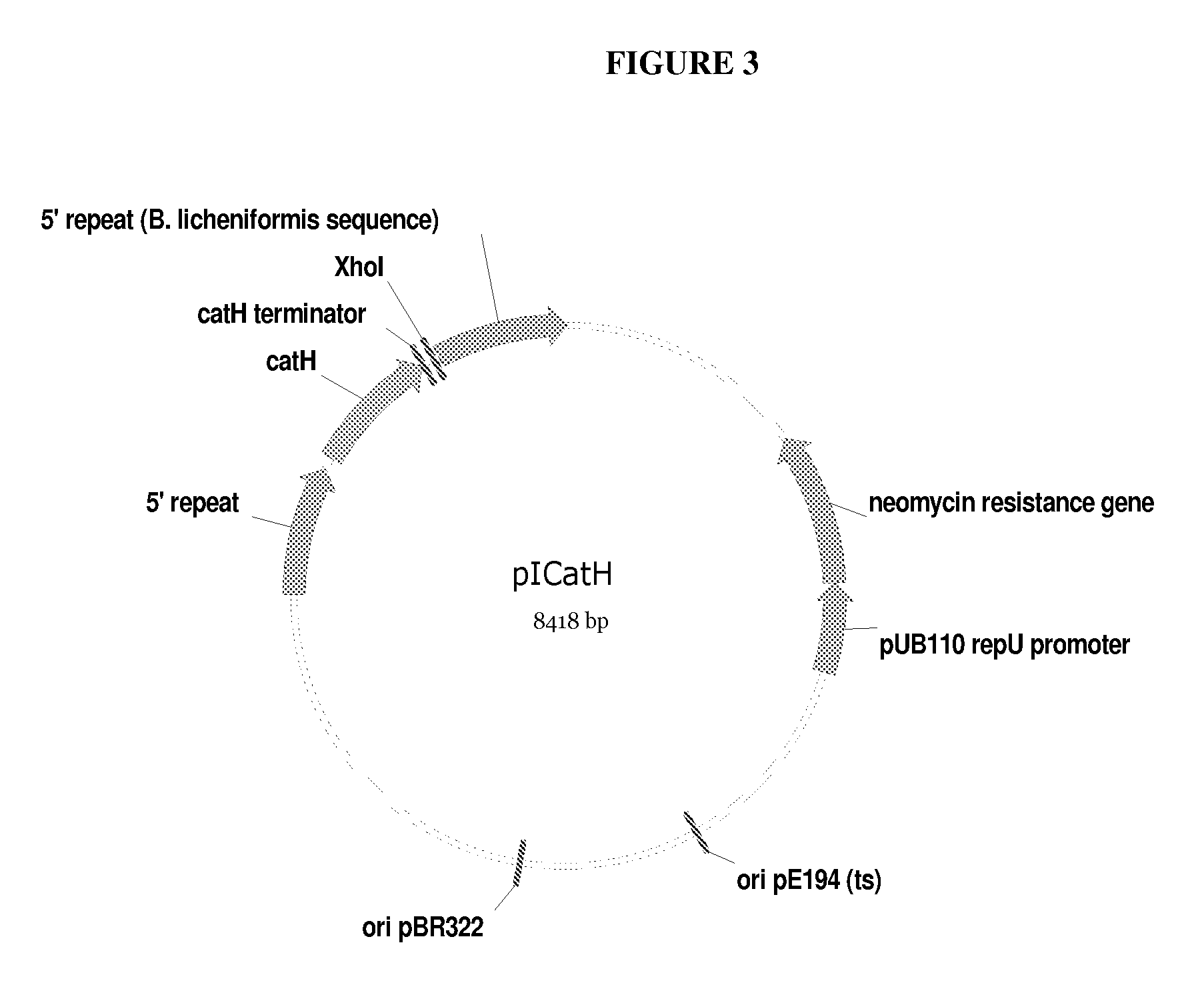Pullulanase variants with increased productivity
a technology of pullulanase and productivity, applied in the field of pullulanase variants with increased productivity, can solve the problems of large quantities of pullulanase recovery, inefficient and expensive recovery, and limited fermentation time to 51, and achieve the effect of superior performan
- Summary
- Abstract
- Description
- Claims
- Application Information
AI Technical Summary
Benefits of technology
Problems solved by technology
Method used
Image
Examples
example 1
Design of Pullulanase Variants
[0111]The following pullulanase variants were designed (see, FIG. 1).
[0112]“PUL” This is the ‘wild-type’B. deramificans pullulanase, identical to the molecule expressed by BMP139. The gene has been codon-optimized, is driven by the amyL (LAT) promoter, and has an amyL signal sequence. The differences between this construction and the one present in BMP139 are as follows (see, FIG. 2). First, the new construction has a codon-optimized coding region, as compared to the native coding sequence in BMP139. Second, the new construction has a shorter amyL promoter region of 100 nt, versus approximately 800 nt in BMP139. Third, the new construction has the amyL terminator, while BMP139 has the B. deramificans pullulanase terminator. Both the new and the old construction have the amyL signal sequence and express identical pullulanase molecules. While the molecule expressed by this new construction is identical to the current product, there may be a benefit with r...
example 2
Construction and Transformation of Plasmids
[0116]Two codon-optimized pullulanase constructs were synthesized, one encoding the ‘wild-type’ pullulanase protein, the other encoding the E99Q_E103Q variant.
[0117]Both encompassed 57 nucleotides of amyL promoter (previously demonstrated to allow cloning in E. coli; longer promoter stretches are lethal), the amyL signal sequence, the codon-optimized pullulanase (variant) sequence, and the amyL terminator. These constructs served as templates for PCR-construction of the three pullulanase constructions described above:
[0118]“PUL” The following primers were used to amplify the ‘wild-type’ pullulanase construct from the synthetic ‘wild-type’ pullulanase construct (XhoI site in bold):
[0119]
Plat5-XhoI_FW:[SEQ ID NO.: 7]cccccgctcgaggcttttcttttggaagaaaatatagggaaaatggtacttgttaaaaattcggaatatttatacaatatcatatgtttacattgaaagggg.Tlat-XhoI_RV:[SEQ ID NO.: 8]tggaatctcgaggttttatcctttaccttgtctcc.
[0120]2) “PULm104” The expression cassette for the truncated pu...
example 3
Integration into the B. licheniformis Genome
[0134]After transformation, transformants were selected on minimal regeneration plates containing 5 μg / ml chloramphenicol and 10 μg / ml neomycin. Transformants were replica-plated to two Heart Infusion-agar plates (known to those skilled in the art) containing the same antibiotics, one of which was overlaid with AZCL-pullulan to select pullulanase positive transformants. Analogous to the situation in B. subtilis, PULm104 transformants showed the largest halos. Plasmids were integrated into the catH locus on the B. licheniformis chromosome. Thus, the following set of integrants, as shown in Table 2, was pursued further for excision / amplification:
[0135]
TABLE 2BML612 PUL Ori1BML612 PUL Ori2BML612 PULm104 Ori1BML612 PULm104 Ori2BML612 PUL_E99Q_E103Q Ori1BML612 PUL_E99Q_E103Q Ori2BML780 PUL Ori1BML780 PUL Ori2BML780 PULm104 Ori1BML780 PULm104 Ori2BML780 PUL_E99Q_E103Q Ori1BML780 PUL_E99Q_E103Q Ori2
[0136]Plasmid excision and cassette amplificatio...
PUM
| Property | Measurement | Unit |
|---|---|---|
| pH | aaaaa | aaaaa |
| pH | aaaaa | aaaaa |
| concentration | aaaaa | aaaaa |
Abstract
Description
Claims
Application Information
 Login to View More
Login to View More - R&D
- Intellectual Property
- Life Sciences
- Materials
- Tech Scout
- Unparalleled Data Quality
- Higher Quality Content
- 60% Fewer Hallucinations
Browse by: Latest US Patents, China's latest patents, Technical Efficacy Thesaurus, Application Domain, Technology Topic, Popular Technical Reports.
© 2025 PatSnap. All rights reserved.Legal|Privacy policy|Modern Slavery Act Transparency Statement|Sitemap|About US| Contact US: help@patsnap.com



